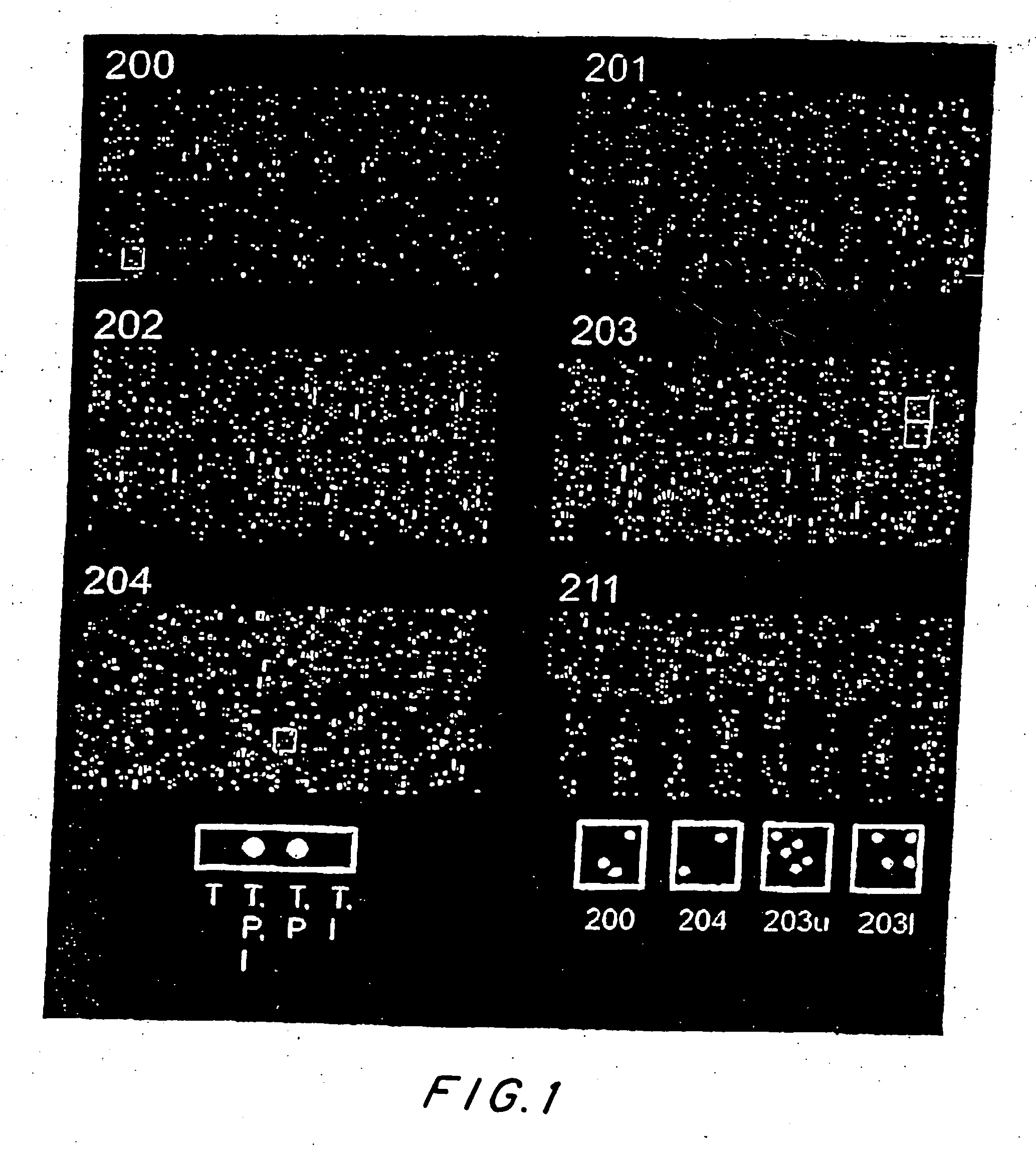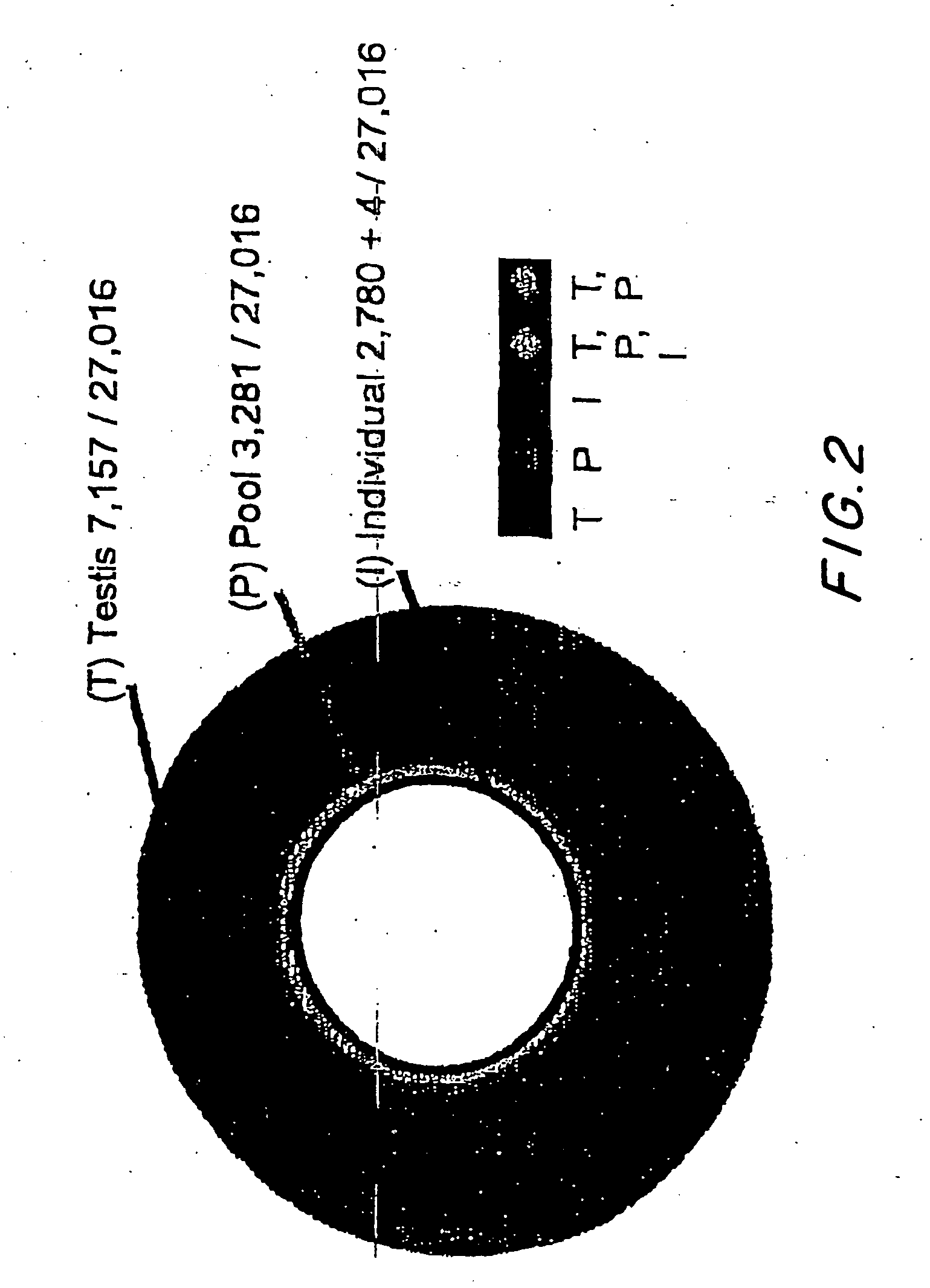Genetic testing for male factor infertility
a technology for infertility and gene testing, applied in the field of gene testing for male factor infertility, can solve the problems of inability to fertilize an egg, inability to observe abnormalities in clinics, and inability to fertilize eggs, etc., and achieve the effect of easy interpretation
- Summary
- Abstract
- Description
- Claims
- Application Information
AI Technical Summary
Benefits of technology
Problems solved by technology
Method used
Image
Examples
Embodiment Construction
[0044] The present invention provides a window into the male reproductive system so that it is possible to monitor overall reproductive health with precision. The assays of the present invention can be used not only for predicting whether an individual is fertile or not, but also to obtain a detailed description of the gene-environment interaction for that individual. In the latter case, microarrays target genetic differences between the normal male model and men who have been exposed to suspected toxins. The microarray test provides a quick determination of whether a man's sperm had been adversely affected by a toxin. This approach takes into account not only how most people respond and the exposure limits that have been set on how most people seem to respond, but also how each individual responds. This knowledge is particularly beneficial to men who are at high risk of environmental toxin exposure through the workplace. In one example, a company could use the microarray test to mo...
PUM
| Property | Measurement | Unit |
|---|---|---|
| Volume | aaaaa | aaaaa |
| Volume | aaaaa | aaaaa |
| Volume | aaaaa | aaaaa |
Abstract
Description
Claims
Application Information
 Login to View More
Login to View More - R&D
- Intellectual Property
- Life Sciences
- Materials
- Tech Scout
- Unparalleled Data Quality
- Higher Quality Content
- 60% Fewer Hallucinations
Browse by: Latest US Patents, China's latest patents, Technical Efficacy Thesaurus, Application Domain, Technology Topic, Popular Technical Reports.
© 2025 PatSnap. All rights reserved.Legal|Privacy policy|Modern Slavery Act Transparency Statement|Sitemap|About US| Contact US: help@patsnap.com



